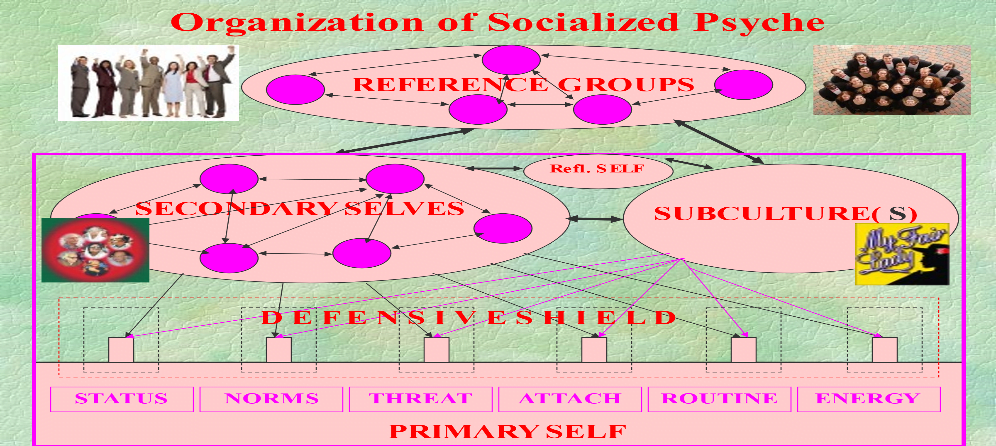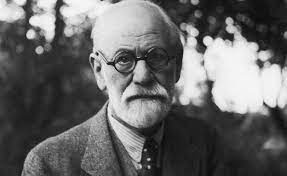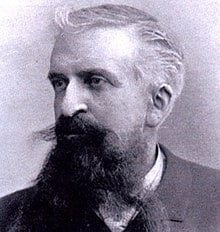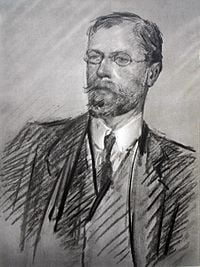Archive
You are currently browsing the archives for the Shared blog category.
By Prof. Levine & Dr. Salganik
Greetings
Below is our article about socialization among non-human primates. For this purpose, we critically used GPT 4 and reviewed literature in PUBMED, and from that we focused on one article that we considered important. In light of the abundance of observations and research, we did not include in the review reports by well-known researchers about their lives with the great apes or studies that reported excellent immediate working memory in chimpanzees or interesting works that reveal a variety of human stigmas about the characteristics of alpha males and more.
1. Group life: Most primates live in social groups whose size can range from a few individuals to dozens and even hundreds. These groups offer protection from predators, help find food, and provide opportunities for learning and social interaction.
2. Hierarchies: Many primate groups operate under a social hierarchy, often dictated by factors such as age, sex, and physical strength. Dominant individuals usually have access to the best resources and the best mating opportunities.
3. Communication: Primates communicate using a wide variety of methods, including vocalizations, facial expressions, body postures, and physical contact. Some species also use albeit simple tools and display other forms of complex behavior.
4. Grooming: This is a common behavior among primates and serves not only a hygienic purpose but also a social purpose. Grooming can help strengthen social ties and maintain group harmony.
5. Mating and Parenting: Primates' mating systems are diverse and include monogamy, polygyny (one male, multiple females) and polyandry (one female, multiple males). In many primate species, parenting is largely the role of the mother, but in some, such as marmosets, males play a significant role, and in others, such as siamangs and gibbons, parental care is shared equally.
6. Cooperation and altruism: Primates often cooperate in tasks such as hunting or caring for young. Some primates have even been observed to exhibit altruistic behavior, such as distributing food or helping other group members in need.
7. Learning and Culture: Primates are able to learn by observing others, allowing behaviors to be passed down from generation to generation. This transfer of knowledge and behaviors can be considered a form of culture.
Each primate species has its own unique behaviors and social structures. For example, baboons live in large groups with complex hierarchies, while orangutans are mostly solitary. Chimpanzees and bonobos are known for their sophisticated social structures and behaviors, including their use of tools and displays of empathy. Gorillas live in groups led by a dominant silverback male. Lesser known species, such as lemurs and tarsiers, also have interesting social lives, but are less studied than their larger relatives.

Read more »
By Prof. Levine & Dr. Salganik
Greetings
This time we will discuss the social structures of mammals apart from those of the higher primates for which we will have a separate conversation. First, we would like to bring here a call for an empathic approach that encourages the understanding of animals while interacting with them. With this approach, consciousness can be understood as inherently social if the traditional dichotomies for understanding animals are pushed aside, in order to make room for our perceptions of the world and of animals as an "interactive environment", an approach that attributes agency [the source of selfhood] to the non-human animal and values empathic observation, an approach in which the ontological and epistemological assumptions about non-human animals in the social sciences can be re-evaluated from a post-humanist perspective. [Taken from the article by Saria Mohammed of the University of Manchester below].
In connection with this, due to its importance, we will quote here the conclusion of an article whose author, already mentioned above, is Saria Muhammad from the University of Manchester:
Sariyah Mohammed [University of Manchester];"Animals as Social Subjects: Towards an Inclusive Social Interaction"
"The inclusion of non-human animals in the social sphere requires a rethinking of accepted sociological assumptions. Symbolic interaction requires subjectivity between the actors. In the past, it was assumed that this was only possible between linguistic actors, and therefore human. However, certain forms of non-human communication with animals are complex in a similar way to human language. Language acquisition and creative use in apes seriously challenges the question of whether humans are, in fact, the only linguistic agents. However, other demonstrations of symbolic interaction are found in non-linguistic contexts. Symbolic interaction can also be defined in terms of social goals that can be shared between groups of the same species or mixed groups of humans and nonhuman animals, for example in social play. Let us recognize that until now the commitment to an anthropocentric ideology has been the main driver responsible for shaping our assumptions about the non-human experience of animals.
One must move away from an objective and mechanistic report on the inhumane behavior of animals in favor of a point of view that sees members of other species as individuals. To balance the debate, there must be as much concern with anthropodenial as there is concern with anthropomorphism. Human understanding is necessarily anthropomorphic, and can also be used as an advantage in research. This approach has led researchers to attribute selfhood to nonhuman animals. Irwin's autoethnographic descriptions reveal that humans experience the subjective self of non-human animals even in short relationships and certainly in long-term ones. In both human-nonhuman animal interactions and intersexual interactions, the self is recognized in terms of agency, coherence, affectivity, and self-history, none of which require the presence of language.
There is, therefore, a need to use subjective interaction in understanding the nonhuman animal self. Since human culture also draws meanings from actors who are non-human animals and from our relationships with them, it is necessary to understand them and how they co-produce our reality, and for this appropriate methods are required.
Finally, the main methodological effort of this field is to understand what nonhuman animals "say" for us. The application of heuristic or critical anthropomorphism in conducting investigations into the nature of relationships with nonhuman animals allows us to find the best, not the simplest, explanation. This requires working with rather than against our human perspective, and realizing that our and animals' cognitive abilities vary in degree rather than type. Different species require different methods of investigation, but any study must be rigorous and systematic, and allow replication of results. We can take advantage of our shared sense of consciousness, using various aspects of movement in space to collect data – including: spatial awareness, actual sign language or social play. It is possible to appreciate how the movement of the body contributes to the creation of meanings between subjects, which can be studied from a post-humanist perspective. If we hope to reach a certain level of understanding of/with non-human animals and what they mean to us and to them, we must first recognize their status as social subjects – and then find new ways to communicate with them."
Below we will first discuss common features of social life in all mammals. We note that in this conversation we used GPT version 4, while checking each input comparing it to other sources in order to avoid incorrect information. We also used the American PUBMED website and a variety of other websites in preparing this conversation.
Read more »
By Prof. Levine & Dr. Salganik
Greetings
As part of our review of the evolutionary manifestations of socialization in animals, this time we will discuss vertebrates, which are birds.
Birds, like humans and other animals, experience a range of emotions. While we may not fully understand the depth and complexity of their emotional experiences, scientific research has provided insights into the emotional lives of birds. Here are some key points: According to GPT 4 and other sources such as PUBMED and more after filtering and checking below is the range of estimated emotions:
1. Fear and anxiety: Birds can experience fear and anxiety in response to perceived threats or stressful situations. They may exhibit behaviors such as alarm calls, seeking shelter or trying to escape from dangers perceived by them.
2. Joy and happiness: Birds can also experience positive emotions associated with pleasure and happiness. They may exhibit behaviors such as singing, dancing or engaging in playful activities when they are in a positive and comfortable environment.
3. Bond and love: Many bird species form strong social bonds, especially with their mates or offspring. These bonds are often based on emotional bonds and can be seen through displays of affection, mutual nurturing or shared caregiving responsibilities.
4. Grief and Loss: Birds can experience grief and show signs of grief when they lose a mate, offspring or close companion. They may exhibit behaviors such as decreased appetite, reduced vocalizations, or increased withdrawal from social interactions.
5. Curiosity and investigation: Birds are known for their inquisitive nature. They often show interest in their surroundings, exploring new objects or environments. This behavior indicates a sense of curiosity and an emotional response to novelty.
6. Aggression and territoriality: Some species of birds exhibit aggressive behaviors, especially during the breeding season or when defending their territories. These behaviors are often motivated by emotional responses to perceived threats or competition.
It is important to note that these points are only estimates and there may be some anthropomorphism in them, that is, a projection of our feelings as humans. Thus, while birds can experience emotions, their experiences may differ from humans due to their unique sensory perceptions and cognitive abilities. Of course, more research is needed to deepen our understanding of bird emotions and the underlying mechanisms.
Read more »
By Prof. Levine & Dr. Salganik
Greetings
This time we will discuss in our review about the evolutionary course of socialization in animals socialization among fish.
First it is said that fish are more intelligent than people think. for example:
Problem solving and use of tools: Some fish have been observed using rocks as tools to open shells. Rainbow fish can adjust the jets of water they spit to knock insects into the water, which accounts for the calculation of refraction.
Memory: Fish have been shown to have fairly good memories. For example, some studies have shown that fish can remember the location of objects, the layout of their environment, and some can learn from past experiences.
Social behavior and communication: Many fish species exhibit complex social behaviors. They can recognize other individual fish, remember them, and can communicate by a variety of means such as sound, visual signals, electrical signals, and chemical signals.
Learning and training: Fish can be trained to perform various tasks. For example, goldfish have been trained to press a lever to obtain food, and they can even learn to do so at certain times of the day.
Spatial navigation: some fish species have impressive spatial navigation abilities. For example, salmon are able to navigate thousands of miles of ocean to return to the stream where they were born when it's time to spawn.
Emotion-like states and pain perception: Fish show behavioral and physiological responses to noxious stimuli, indicating that they can perceive pain. Some researchers claim that fish also show signs of experiencing fear and stress.
These examples illustrate that fish intelligence can be quite complex, although this is of course different from the intelligence of mammals and especially primates. It is also worth noting that there is great variation between fish species, just like there is between mammals, and not all species will display all of the behaviors listed above.
Read more »
By Prof. Levine & Dr. Salganik
In the upcoming talks we will discuss the mechanisms of influence and social interaction in group animals and raise the question to what extent they have individual brain representations of their peers.
In this conversation we will discuss invertebrates such as bees and ants, while in the following conversations we will discuss vertebrates such as fish and birds, various mammals including dolphins, and finally monkeys whose genome is close but not identical to that of humans, Homo sapiens.
As a general rule, in insects, bees and ants have a clear division of roles, and a morphological [formal] change is evident in them according to their roles in the group, when the role is usually relatively defined and fixed at different times during life. Bees and ants usually build complex structures that require the cooperation of group members. The question arises as to how the ant or the bee know their roles in building the structure. Does each have a general plan of the nest structure or does each only have a specific function within the structure. We note that even if each does not have a general plan of the structure, it is still possible to create a complex structure if there are certain interactions between the members of the group according to specific representations in their brains. We note that the influence of the members of the group on each other can be done in different ways, whether by contact or the secretion of pheromones or in other ways. As a general rule, it is certain that ants or bees do not have a developed brain representation of their counterparts as in humans, but there is probably a partial representation that is nevertheless necessary for their interactions.
See: Wyatt TD. Introduction to Chemical Signaling in Vertebrates and Invertebrates. In: Mucignat-Caretta C, editor. Neurobiology of Chemical Communication. Boca Raton (FL): CRC Press/Taylor & Francis; 2014. Chapter 1
Below we will ask a number of questions relevant to the social interactions in bees and ants with the help of a variety of sources including; PUBMED : GPT; WIKIPEDIA GOOGLE; and we will discuss each of them:
Read more »
By Prof. Levine & Dr. Salganik
Greetings
Let's first recall the "social ego" model shown in the figure below:

First we note that the social self is mainly influenced by the external reference groups [in external reality] and even projects onto them what is reflected in the figure above. It was also said first that a structure is defined as a mental structure that expresses a defined function or functions, while external groups are defined as a group of people in external reality who have some common denominator and mutual interactions.
Below are definitions of the structures and concepts that appear in the above suggested model.
In this model we propose that one must first differentiate between the primary self [PRIMARY SELF] which is actually the basic biological core consisting of several innate structures and which is subject to development during life. and the social self [SECONDARY SELF] which is a structure that develops during the exposure of a person to social influence and consists of internalizations of figures significant to a person that originate either from external groups or from imaginary groups related for example to a character from a myth, from a movie, and more that had a considerable influence upon the person. We will note here that at birth there are apparently innate patterns for most parts of the self such as the social self and its parts that form nuclei for the future development of these structures.
The Secondary Selves include: 1] the variety of representations of the "I" that originate from attitudes and feelings towards the self and its representations in different periods of life; 2] the representations of internalized characters that often originate from significant characters that the person is exposed to during his life but as mentioned there may also be imaginary characters represented in books, movies, etc. that had a significant impact on the person; 3] person’s representations of the "subculture" [subculture refers to social influences in the milieu in which a person lives and are not specifically related to a specific person, [as we will see later, this refers to the combination of the existing culture and the subculture in which the person lives]. For convenience, we refer to the variety of internalized secondary selves as the "board" of internalized characters. We note that often one or more of the secondary selves takes precedence and dictates the attitudes and behavior of this directorate and he/they are referred to by us as "the Dictator Self" or “Dictator Selves”. The reference here is not to the dictator of a country, but rather to an internalized figure which is dominant in the board of the internalized characters.
The Bodily Self is defined as the set of experiences related to the perception of the body, its limits and sensations and also includes thoughts, attitudes and feelings towards the body and which begin with the innate bodily self which, as mentioned, continues to develop in human life.
And finally we include here the Reflective Self which is defined as a structure that develops following the development of the social self and enables a comprehensive insight [even supervision] to the individual's state of awareness and mental expressions.
In order to focus on our subject, we will not mention here this time the Sensitivity Channels that appear in the illustration above and their influence, you can read about them in previous conversations.
The current conversation focuses on the secondary self (or secondary selves) represented by the subculture.
Read more »
By Prof. Levine & Dr. Salganik
Hello to our dear followers
Introduction
Dreams were an important subject in ancient times and were interpreted and understood in different ways by different cultures and civilizations. It was generally believed that the dreamer goes wandering in the world of dreams or that the dream penetrates him in a passive way, and sometimes is sent to him by the gods.
In ancient Egypt, dreams were considered significant, and dream interpretation was an essential part of their religious and cultural beliefs. The Egyptians believed that dreams were a way to communicate with the gods and that they contained messages about the future. In the 14th century BC, appeared the earliest dream book with interpretations of these transmissions. It is interesting to note that the Egyptian dream solvers introduced the "theory of contrasts": they claimed, for example, that a dream of death foretells a long life.
In ancient Greece, dreams were believed to be messages from the gods, and their interpretation was essential to understanding the will of the gods. Many sacred places in Greece were used for the "incubation" of dreams: the visitors were invited to use drugs and potions that put them to sleep, and their dreams were defined as prophecies, in connection with the illnesses and circumstances of the dreamers' lives.
In ancient Rome, dreams were also considered significant and were often used to predict the future. The Roman writer and orator Marcus Tullius Cicero wrote a famous book on the subject called "Interpretation of Scipio's Dream", which explored the meaning of his dream and its interpretation. In this dream, Scipio is exposed to the eternal life of the soul, and as he looks out over the entire universe, he learns its secrets and realizes that our existence in this world is fleeting and meaningless.
In ancient China, dreams were believed to be a way to communicate with the ancestors and spirits, and their interpretation was essential to understanding the will of the gods. The Chinese also developed a system of dream interpretation, which was based on the symbolism of various objects and events in dreams. In general, dreams were seen as significant and were often interpreted as messages from the divine or the supernatural. In Matach's educational library it is noted based on sources that Chinese scholars believed that dreams occur when the spiritual soul is temporarily separated from the body and can converse with the souls of the dead, or with the gods. Thus, in the 14th century AD, visitors to a Chinese city were required to sleep the first night inside the temple of the god of the city, in order to be able to receive the transmissions – which is somewhat reminiscent of the "incubator" temples of classical Greece.
We have to admit that there are many theories about the nature of dreams, which implies that one central theory that is solid and backed by scientific evidence has not yet been formulated.
In general, some of the prominent dream theories claim that the role of dreaming is, among other things: consolidating memories, processing emotions, expressing our deepest desires, gaining practice in dealing with potential dangers, and more. Thus many experts believe that we dream due to a combination of these reasons and not due to one particular theory. In addition, while many researchers believe that dreaming is essential for mental, emotional and physical well-being, some scientists suggest that dreams serve no real purpose at all.
Read more »
By Prof. Levine & Dr. Salganik
Hello to our followers, this time we will address you in a different way and please let your imagination run wild…
The year was 2084, and the place was a spacious living room in an unnamed city. Alexey Gerbord sat in his chair looking from the height of his years at the huge water tank in front of him. The deadly box jellyfish, also known as the "Sea Wasp", appeared in front of him swimming slowly in the water of the huge aquarium that filled half of the living room of the house. This deadly jellyfish is called a cube jellyfish because of its body structure. With great effort, Garbord obtained it from the Indonesian sailor and tamed it because it was a complex jellyfish in its behavior and faster than other simple jellyfish, while its appearance, which deterred every human eye, spoke dearly to his heart. Its scientific name was Chironex fleckeri and its origin? You guessed it, from the Indonesian islands, it swam now peacefully in front of him, looking at him with her two dozen eyes, four of which were watching him with an almost human expression. Although he was wary of her and never reached out to shake her arms, he used to ask her questions that troubled him and disturbed his peace. Her answer was not in speech, but through thoughts that hurt his mind as if they were placed, inserted, or transmitted to his mind, something that psychiatrists used to call in the early 2000s as “though insertion”.
He has just finished reading the Machiavelli's “Prince” for the third time, each time pinning a page from the pages of the book to the transparent glass of the container and allowing the transparent jellyfish to observe and read as well. This jellyfish is thought to be mostly water and venom and "my God", Alexey thought "how can it read ? I will not understand, since it has no brain". And yet Alexey believed that her wisdom was greater than that of a human wisdom. And she even strangely often reminded him of the artificial intelligence such as CHAT GPT that had joined his life sixty years ago.

PICTURE 1
The deadly Cube jellyfish, also known as the "Sea Wasp"
This time he turned and asked her: "How is it that in our world, a limited number of people lead crowds led by these leaders?"… "How does this happen?" And you the reader may ask, "how did he asked this a creature which is unable to hear his voice?" The answer is that he showed her a page with the question on it. The jellyfish circled two or three times in the tank with its long arms clinging tightly to its sides, its white transparent body with purple silver streaks passed by him, and the answer appeared and flashed in his mind: "Those who are the led ones are influenced by shapers of public opinion who see their role in the necessity of shaping and correcting the opinion of the led crowd. These shapers represent a limited number of top leaders.” “It’s so reassuring, of course, for the people in the crowd” – added the jellyfish – “to quote these agitators and their words without them fully understanding the dilemmas that exist at the basis of the proposals and messages sent to them and even the possible solutions to these dilemmas other than the only solution offered to them according to the interests of the shapers."..…
"The propaganda of the shapers of public opinion" – continued the jellyfish – "is referring mainly not only to the intellect but also emphasizes emotional aspects, usually conveying targeted, simple, catchy and repeated messages to the crowd, which, as mentioned, arouses emotions to messages that the leaders and opinion shapers are interested in. And likewise, as it is usually presented in propaganda, there is a prominent hostile person, a group, an ideology, against whom the campaign of persuasion is directed."
She carried on: "Sigmund Freud in his essay on crowd psychology ("Group Psychology and the Analysis of the Ego") from 1921 in which Freud refers to the psychology of a society or crowd and especially to what he calls the "herd instinct", argues that there is a phenomenon of a crowd behaving in a regressive way. A crowd that drifts in the direction of those shaping its opinion without the individuals in the crowd really and deeply knowing why they behave and drift in this way, and don't even fully understand what it is all about. More often than not what motivates people is the sense of belonging to the group of the crowd of individuals, who now have a common goal designed for them that unites them. And being inspired by the opinion makers, they have a strong desire that others also join them, and they have a sense of urgency, and a feeling that a catastrophic scenario is about to come true, of an imminent disaster, and all of this is accompanied by very strong emotions."

PICTURE 2
Sigmund [Shlomo] Freud Austrian Jewish psychiatrist founder of psychoanalysis [1856-1939]
Freud in his writings mentions Gustave Le Bon, who in his book "Psychology of Crowds", writes:
"The most amazing thing about a crowd is that, by virtue of being a crowd, they become a collective soul, due to which they feel, think and act in a completely different way as a crowd than each of them would think and act if they were acting alone as an individual."

PICTURE 3
Gustave Le Bon, French psychologist and sociologist [1841-1931]
Le Bon claims that the crowd's tendency towards conservatism demonstrates a considerable weakness in its logical thinking. Its behavior is essentially emotional, and is based on myths, images and symbols, and tends to enjoy following leaders [and public opinion shapers] who will dictate its path. Le Bon, speaks of 'contagion' between the people of the crowd, a form of hypnosis-like phenomenon, in which the crowd is in a suggestible state. In a crowd, the feeling of responsibility is absent, an instinctive feeling of liberation appears accompanied by a feeling of power that can be called "the power of the crowd", a crowd that becomes impulsive and acts out of impulses. Such a crowd is susceptible to the influence of words and messages and their magical power."

PICTURE 4
An excited crowd.
"How does the jellyfish know that?" thought Gerbord Alexey, and at one point he remembered that the jellyfish sent a long arm to a pile of books that he had placed a week before near the water tank, a pile in which there were delicacies side by side, Freud's book, Le Bon's and Machiavelli's along with social psychology, history, and war books and these dropped from the arm of his friend the jellyfish into the water of the huge aquarium and soon they were wrapped in all dozens of its arms in front of its two dozens eyes and especially in front of its four well developed eyes and were finally digested and arrived into its transparent insides.
Here Alexey asked the jellyfish: "Tell me, what are the causes of mob mentality?" This time the jellyfish didn't go around in a circle in the aquarium and didn't even change its colors. "I will answer you," she replied, "what I learned from social psychology, since it lists six factors:
Deindividuation – when people are part of a group, they experience a loss of self-awareness.
Deidentification – when people are part of a group, they can lose their sense of personal identity.
Emotions – being part of a crowd induces heightened emotional states, be it excitement, anger, hostility, etc.
Acceptability – behaviors that are normally perceived as unacceptable become acceptable when others in the group are seen performing them
Anonymity – people feel anonymous within a large group, which reduces their sense of responsibility.
Diffusion of responsibility – being part of a group creates the perception that violent or unacceptable behavior is not a personal responsibility but a group responsibility.
Finally, the larger the group, audience or crowd, the greater the chance of de-individuation and diffusion of responsibility."
"I’ve got it," Alexey said to himself…"But sometimes", he thought, “it leads to disengagement, struggle and even killing"…"This reminds me of civil wars" thought Alexey. "This reminds me of divisions in families on the basis of identification with ethnic and other national groups while in the background there is a feeling of a strong threat to survival" he continued to think, and then Garbord Alexey turned to the jellyfish, which was now circling in the aquarium, closed its two dozen eyes and confirmed his last thoughts in his head.
"The main essence," the jellyfish's words suddenly struck in his mind, "is that in every society there is a small group that shapes public opinion and manipulates many people in order to achieve its goals. This happens whether in a small group, whether in an organization, or in a country. The leaders therefore use a group or a crowd that is led according to their goals by shapers of public opinion. And these shapers talk about the danger to survival and convince the crowd to put this as a top priority over other needs, even over basic needs such as eating, reproduction, etc. Hence, these shapers are therefore using the survival instinct in order to achieve their goals. The crowd is therefore a moldable body at the mercy its leaders."
Here Alexei turned again and again to the jellyfish until he begged, but for some reason the jellyfish was silent and no thought of her hurt his mind. So Alexei returned to her the next day, not before emptying a basket full of fish into the aquarium water that was soon wrapped around her long arms, swallowed by her intestine, where it was gradually digested, gradually decomposed and was seen through her transparent body.
"Tell me, my friend," he turned to jellyfish, "what are the mechanisms for activating the crowd?"
At first the jellyfish answered in his mind that "the crowd must know that there is an extremely dangerous and uncompromising enemy”.
"Secondly" she added, "a person must know that its life or freedom and even of those close to him are in danger."
A person must also be convinced that there is a heavy and threatening uncertainty in the current situation and that the enemy may prevail and that catastrophic consequences are eminent….The crowd must even believe that the absolute truth is on the side of the shaper of public opinion and perceive that blatant lies are being told by the opinion shapers and leaders of the opposing side."
Here the jellyfish circled twice in the tank waving her arms and added that "the crowd must believe that there is only one solution without any alternatives and that there should be no contact or negotiation with the enemy and finally she added that it is necessary for the crowd to believe that it must take an immediate action and there shouldn’t be any compromise."
“Indeed”, Alexey thought, "This is a universal mechanism. The thinking dictated to the crowd therefore becomes reductionist, dichotomous, one of black or white without intermediate shades, and the crowd must believe with all its heart that whoever is not with them is against them."
Here Alexei invited to his home his friends Dr. Igor Salganik and Prof. Joseph Levine, who are respected in their own eyes and even in his eyes, "And what would you say?" – he asked. But these two were amazed and shocked at the sight of the huge tank containing the jellyfish, with her eyes looking at them as if they were a prey, with the terrifying transparency of her organs.
Alexey, who sensed this, calmed them down, and handed them two transparent glasses with wine as clear as the aquarium water. Then Alexei spoke to them the previous words of the jellyfish as they appeared in his mind. And despite their reservations about the “monster”, these two psychiatrists agreed with her words and even added:
"We talked," these two said, "in a previous conversation that in a totalitarian country, the majority often change their way of thinking to the way of thinking of the dictator, for the sake of their mental and even physical survival, Thus the positions of the dictator or the totalitarian state take over, override their own positions. This is the essence of indoctrination. Here in each and every individual, in his 'directorate of internalized characters' that builds his 'social self', appears a new dictator-self which overrides the previous dictator-self of his inner directorate [see previous conversations]. In fact, the real figure of the external dictatorial leader becomes a new internalized 'dictator-self' in the individual's 'directorate of internalized figures' dictating positions characterized by black and white mode of thinking without intermediate shades.
Here, embarrassed and apologetic, Alexey asked his guests to wait in a nearby room, as he felt that it would be difficult for the sensitive jellyfish to speak to him and that she preferred privacy, he then turned again to this transparent and gelatinous jellyfish, though without a brain, having an incomprehensible wisdom in her body.
"Tell me my friend the jellyfish?" Alexey addressed her, "How can a person avoid being drawn into the tornado of the crowd and being cut off from its usual ways, and from its usual cognitive judgments ? Oh oh, as the jellyfish answered in Alexey's thought, shaking her arms in
the water, "I know this from my experiences with the masses of huge shoals of jellyfish that wash up on the shores of the seas, and I assume that a similar thing happens to humans as well." Jellyfish continued with her thought, "Please let humans know the mechanisms of manipulation. Draw
before your eyes the image of a satanic enemy, who tries to convince you to perceive and understand a given situation as a threatening danger for you, which could fatally harm your physical or symbolic survival, trying to convince you that there is only one solution to this that the leader is the only one who knows.
In such a situation, you humans, should try to avoid as much as possible exposure to the media or to people who carry out such a practice, especially try to avoid discussions with people or a group of people who are already affected by these manipulations. Be aware of their attempts to get you to
let them know which side you are on in the situation. Do not share your positions and points of view with them. Be careful, look for reputable people who are known to stand up to manipulation, who see multiple points of view and don't see things in black and white dichotomous thinking manner. Sometimes these people will even swim against the current of the crowd. Try to understand their way of thinking and dealing with such situations, and if possible – try to establish contact with them and cooperate with them…
Also, try to continue with your normal flow of life in the family, with friends, at work, in the pursuit of hobbies, and do not allow yourself to be excessively preoccupied with the subject that is at the center of the manipulation effort… Finally, try to inform yourself about the subject in question
through various and diverse sources that provide different points of view that will allow you to form your own opinions."
Here the jellyfish was lighthearted and splashed its many arms in the aquarium water until they drifted and swelled like a sigh as if to say that it is not easy not to drift with the crowd and form an independent opinion.
"And what do you think could be a solution?", Alexey asked, the jellyfish "for situations in which there are two sides, each led by manipulative public opinion shapers, who give each side the feeling that its survival is in tangible and immediate danger, and it is forced to act against the enemy that is the opposing side?"
The jellyfish spined around in the tank, the fish still being digested and sprouted from her transparent intestine, inserting six ways of solving the problem into Alexey's mind:
"1] As soon as the anxiety about the conflict is already more intense than the survival anxiety of each side, there might appeara mediator, actually a newer, independent public opinion shaper. He should be accepted by both parties addressing the survival fears of each party offering a compromise that meets and resolves the fears of both parties.
2] The appearance or rise of a powerful third dictatorial factor that dictates a solution sometimes even by force of arms or through powerful sanctions.
3] Severe damage to one of the opponent groups [and thus actually the second group wins] which weakens it and enables a solution.
4] Gradual stabilization of the conflict, becoming chronic while developing mechanisms of adaptation to the new established conditions.
5] The emergence of a strong existential threat from another factor that brings the hawks to unite in the war against it.
6] Existence of a hidden structured mechanism that exists in both groups all the time (only that they are not aware of it) which enables change within a longer time span.
7] The introduction of external influences or changes in values that will gradually change the conflict’s definition and provide a solution.
That's it gentlemen for the time being,
Best regards
The deadly cube jellyfish also known as the "sea wasp" and her friend Alexey Garbord.
and, as always, yours
Dr. Igor Salganik and Prof. Joseph Levine
By Prof. Levine & Dr. Salganik
Greetings

Axel [Martin Frederik] Munthe (1857 – 1949)
In Wikipedia and in a contemporary exhibition [February March, 2023] in honor of his archaeological activity at the Historical Museum of Archeology in Naples Italy it is stated that Axel [Martin Frederik] Munthe (1857 – 1949) was a Swedish physician and psychiatrist, the author of the book "The Story of San Michele", a book describing his life and work . Munthe grew up in Sweden, studied medicine there, and later studied medicine in Paris (where he was a student of Charcot with whom he had a conflict).
Munthe opened his first clinic in France but spent most of his adult life in Italy at his home on the island of Capri known as San Michele.

Villa San Michele on the island of Capri


Axel Munthe . The story of San Michele. 1929
As mentioned, after finishing his studies, Munthe opened a clinic in Paris, mainly to serve the members of the Scandinavian art colony there. In 1884 he traveled to Naples to offer medical aid during a cholera epidemic. In 1887 he moved to Capri, bought the Villa San Michele and began its restoration, in 1890, when the money for restoration began to run out, he opened a clinic in Rome and from that point on divided his time between Rome and Capri. During the First World War he volunteered for the Red Cross and cared for the war wounded
Apparently he had a complex personality, one that could connect with the aristocracy [he treated royals from Sweden and England] on the one hand and the common man on the other. We note that there are some critics who tend to attribute exaggerations to some of his writings, especially in his book "The Story of San Michele".
Munthe tried to avoid giving medication as much as possible, especially in his psychological therapeutic cases, and often recommended hypnosis, music, walking, sailing and a variety of other alternative medical approaches.
Below we will bring you a therapeutic case from his writings. We will analyze it later according to our assumption that the "SOCIAL SELF" of the person, which includes its perceptions, actions and views, consists of a "board" of internalized figures, while the person itself is not aware of this.
Read more »
By Prof. Levine & Dr. Salganik
Following on from the previous blog conversations, we also assume here the existence of an internalized "enemy group" in our brain that is separate from the internalized social self-characters group that we will call here the "directorate of internalized characters" or for short "the board".
We will give several reasons for this:
First, as we mentioned before, we assume that the rules that apply to a real external group or groups also apply to a group internalized within the individual. If we look at the structure of groups in the outside world, we will quickly notice the existence of oppositional groups to a given group in almost any chosen social field. This is so entrenched that in the parliamentary political system the opposition group or groups are recognized, they have a place, and a chairman with agreed rights is even elected for this collection of groups or groups. And if we claim that the rules that apply to a real external group or groups also apply to a group internalized within the individual, then there is room to speculate about the existence of an internalized group of opponents or enemies.
Second, in the internalized board of directors’ group that builds the social self, there is a leader or leaders that we even called the "dictator-self" who imposes censorship on the acceptance of certain positions and values and figures who advocate them, even if they are significant to an individual and those are excluded to another group, i.e. the group of enemies or opponents.
Thirdly, we talked about the existence of sensitivity channels. These may also play a role in building the group of enemies. For example, if an individual has a channel of sensitivity to high status, then if a certain character interferes with this or threatens it, then this person will not be included in the group of the board of directors but in the group of opponents.
Fourth, there are imaging studies of the enemy figure that demonstrate that its representation or representation in the brain is different from that of other familiar people. In a comprehensive review article, Motoaki Sugiura opens by saying that an enemy is considered to be someone against whom we hold negative social attitudes and in response to his approach we enter into "fight or flight" behavior.
Read more »
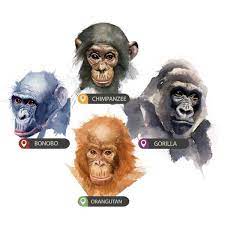
 Prof. Joseph Levine, M.D. is an emeritus associate professor in the Division of Psychiatry, Faculty of Health Sciences, Ben Gurion University in Israel. Prof. Levine is a certified psychiatrist with clinical experience in controlled trials of adult psychiatric disorders and in psychotherapy. He was awarded a NRSAD independent investigator grant for the study of Creatine Monohydrate in psychiatric disorders -- mainly Schizophrenia. He resides and treats patients in Tel Aviv and all of central Israel.
Prof. Joseph Levine, M.D. is an emeritus associate professor in the Division of Psychiatry, Faculty of Health Sciences, Ben Gurion University in Israel. Prof. Levine is a certified psychiatrist with clinical experience in controlled trials of adult psychiatric disorders and in psychotherapy. He was awarded a NRSAD independent investigator grant for the study of Creatine Monohydrate in psychiatric disorders -- mainly Schizophrenia. He resides and treats patients in Tel Aviv and all of central Israel.
